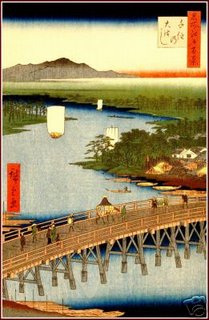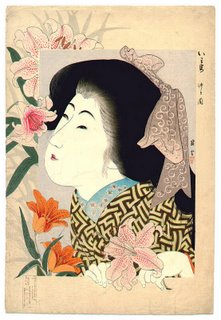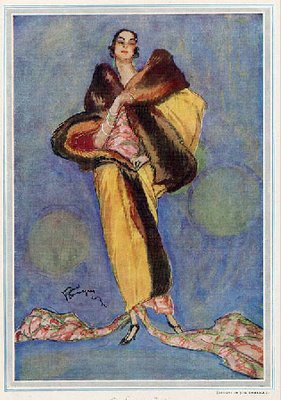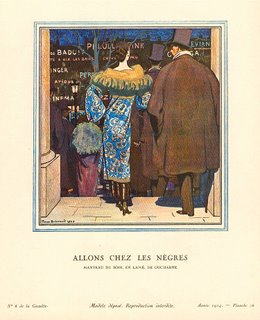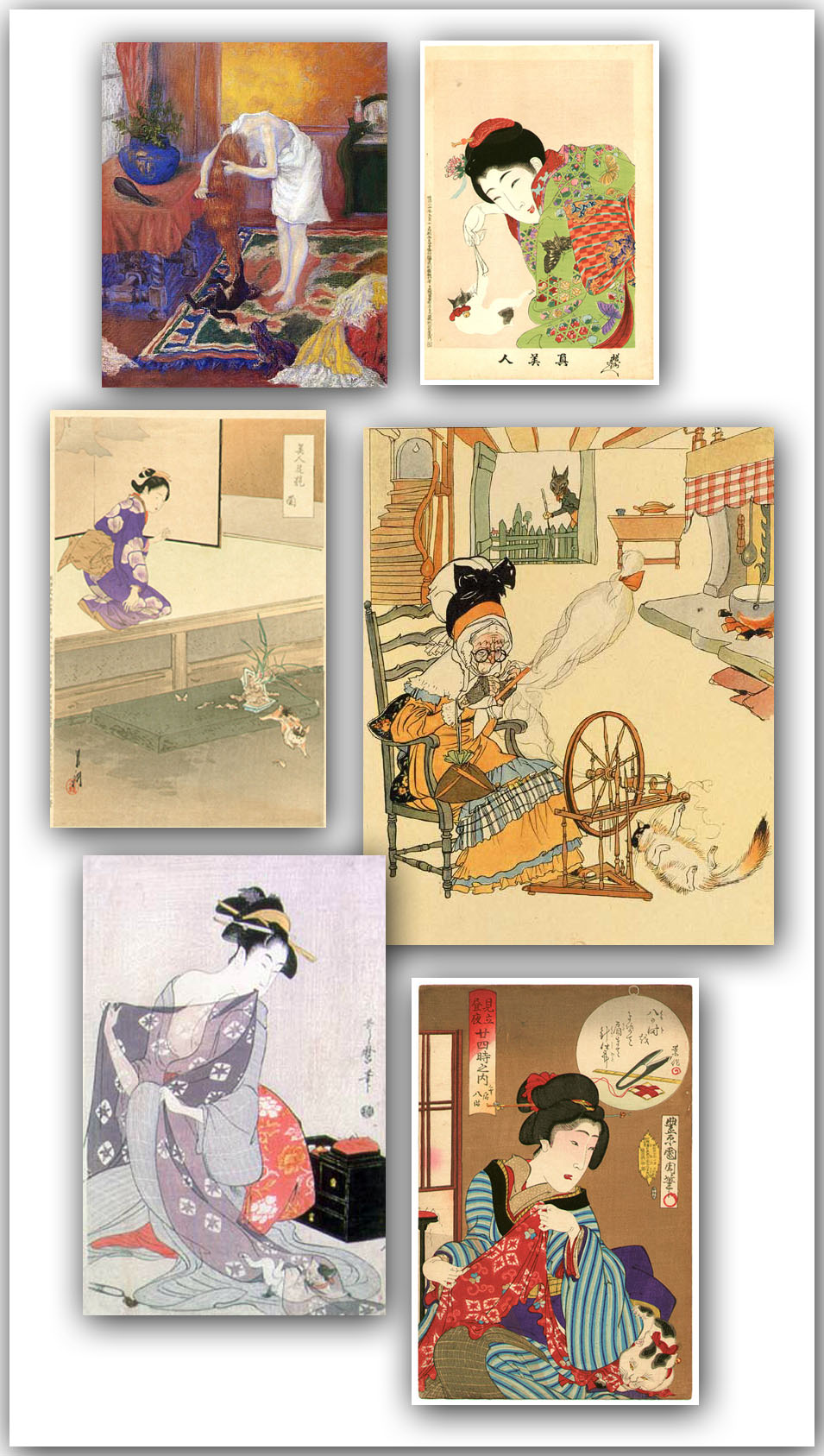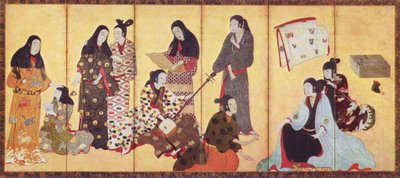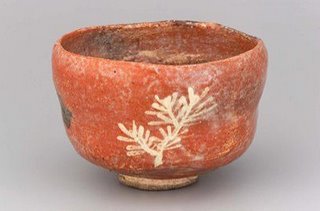cross-cultural reveals
 lauren asked in a previous post: I really love all of the cross cultural comparisons. I was looking at Impressionist painters today, and I was wondering if you know of any works by Japanese artists that compare to Degas' paintings of ballerinas...
lauren asked in a previous post: I really love all of the cross cultural comparisons. I was looking at Impressionist painters today, and I was wondering if you know of any works by Japanese artists that compare to Degas' paintings of ballerinas... thanks so much for asking, lauren. what i've seen suggested is that degas is doing with these, to some extent, what hokusai was doing in his manga (sketchbooks) -- illustrating movement, playing with bodies from different angles, etc. i'll add to that the fact that you are getting the 'elongated canvas,' almost screen-shaped, along with that diagonal leg creating separate, asymmetrical, portions of the whole. i'm currently looking into the introduction to the west of this from, as well as the scroll form; watch this space.
thanks so much for asking, lauren. what i've seen suggested is that degas is doing with these, to some extent, what hokusai was doing in his manga (sketchbooks) -- illustrating movement, playing with bodies from different angles, etc. i'll add to that the fact that you are getting the 'elongated canvas,' almost screen-shaped, along with that diagonal leg creating separate, asymmetrical, portions of the whole. i'm currently looking into the introduction to the west of this from, as well as the scroll form; watch this space. ...Mary Cassatt's "Woman With A Pearl Necklace In A Loge"...
...Mary Cassatt's "Woman With A Pearl Necklace In A Loge"...mary cassatt's paintings didn't really reflect her love of the japanese style in the way her prints did. i've mentioned her series of mothers with infants, so strongly influenced by utamaro's similar series (which she collected),
 but i thought this was interesting too:
but i thought this was interesting too:
...or Renoir's "Dance at Bougival"�?
 after painting madame charpentier and her children with both a japanese screen and a scroll on the wall behind them, renoir decided he hated this whole 'japonisme' thing. it was too popular, there were too many imitators, too much kitsch. it was on posters for bicycles, for goodness sake!
after painting madame charpentier and her children with both a japanese screen and a scroll on the wall behind them, renoir decided he hated this whole 'japonisme' thing. it was too popular, there were too many imitators, too much kitsch. it was on posters for bicycles, for goodness sake!he decided he hated his own painting, and never followed that trend again.
Labels: degas, hokusai, mary cassatt, renoir







